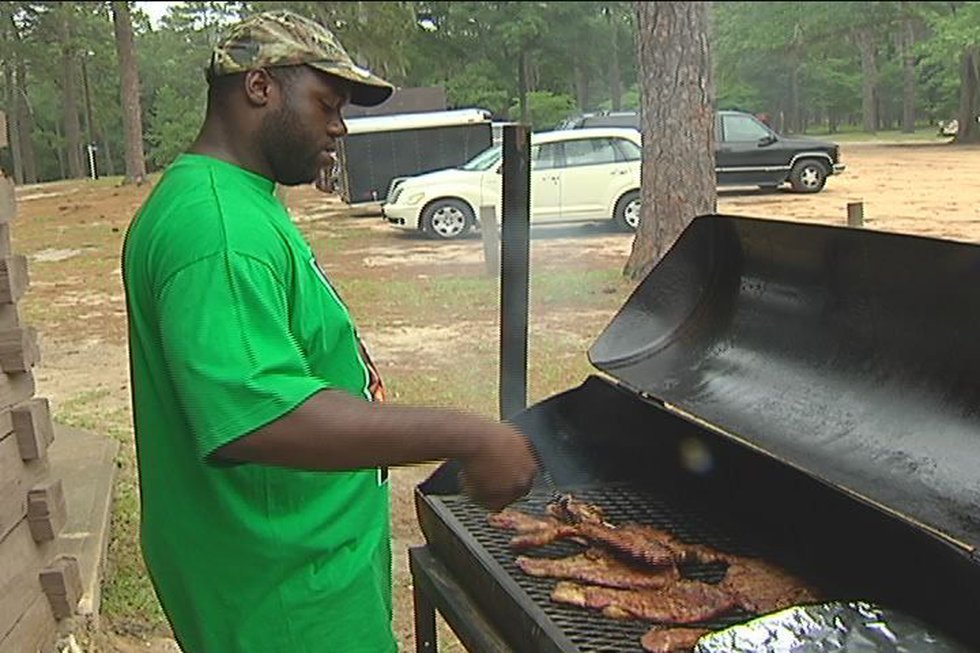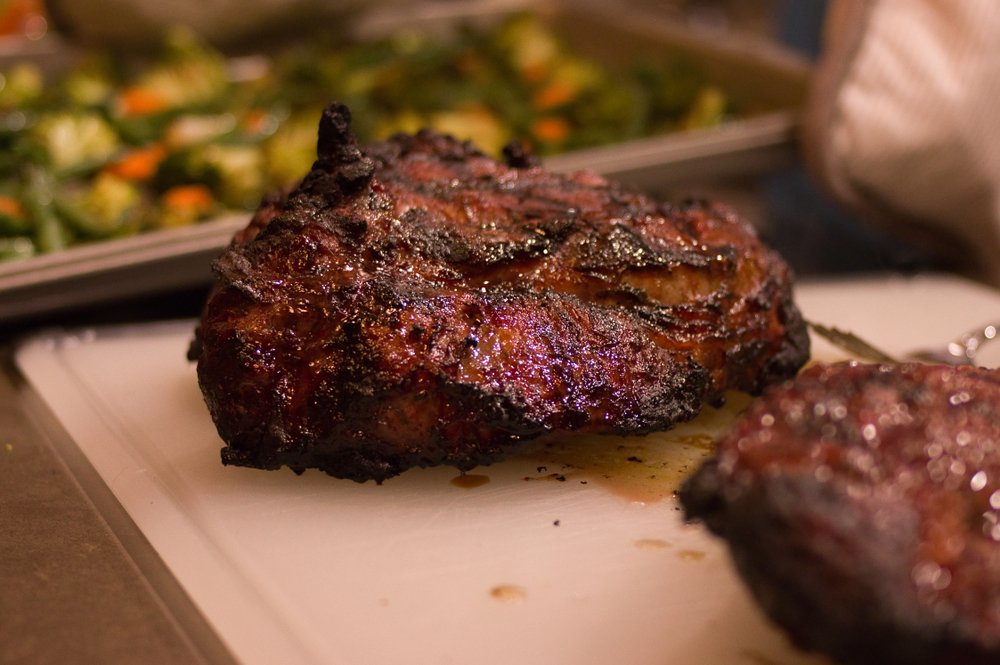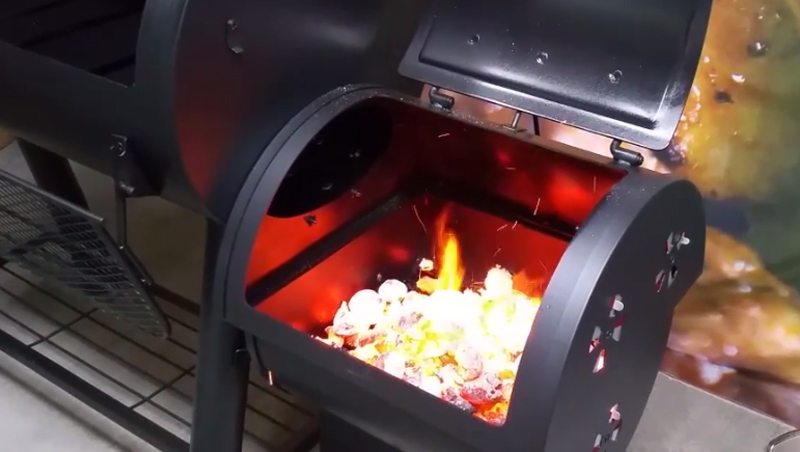
There are some things you need to know in order to use your charcoal smoking device effectively. The key part of the process is correctly fueling it. You must also monitor the temperature. Here are some charcoal smoker tips to help you do that. It is important to thoroughly clean the grill grates and to add hardwoods when necessary. After all, the meat will be cooked by the smoke and flavor of the wood smoke! How do you ensure your meat is succulent and succulent?
Proper charcoal smoking fuel
Briquettes are a cheap option, but they're still not the best charcoal choice. Charcoal brquettes are often made with hardwood, which is more difficult to find. They can also be very expensive. They burn longer than lump coal. Briquettes are much easier to light than lump coal, although you may need to use lighter fluid. Lump charcoal is the best option for budget-minded people.
It is best to avoid lighter fluids that are used for charcoal smokers. These products can taste bad and could cause you to lose your meat. Use natural fire starters instead to light the fire. Follow the manufacturer's instructions when lighting the coals. You should never use lighter fluid to light the fire. Lighter fluid can cause chemical flavoring in your meat. These are some guidelines for lighting your charcoal smoker. These tips will ensure that you get the best charcoal smoker flavor.
Both charcoal and gasoline are excellent options for smokers. However, each one has its pros and cons. Charcoal is more affordable than gas, but you can also buy charcoal or gas. Charcoal smokers do not need a fuel tank. They can also be very large. They need at least 6x4 feet of space for optimal performance. You can buy the right fuel for your smoker and enjoy the taste of delicious smoked meat! So, get cooking! Smoke charcoal smokers are for you if smoke is your favorite flavor!
Hardwood charcoal lumps can be used in place of charcoal briquettes. These lumps look a lot like chunks of wood from an extinguished fire. These lumps are about the size of a golfball or a grapefruit. They produce a pleasant smoke and are perfect for low- and slow cooking. They can also serve as high heat grilling tools. If you're a beginner at smoking, stick to briquettes.
Wood chunks are an inexpensive and easy way to get the smoky flavor you desire. Wood chunks also give off the bark and smoke ring that you see in charcoal smokers. Wood chips can be used as a secondary fuel source, and they are also an excellent option. Different fuel sources will produce different results. However, the main goal is still to get the best flavour from your meat. You'll enjoy a lifetime of delicious food once you learn how to use a charcoal smoker.
Keep an eye on the temperature
It is crucial to monitor the temperature while smoking meat to ensure it cooks perfectly. Smokers produce smoke from heat, which can cause food and other ingredients to burn. The temperature of the smoke drops if you open the lid. It can take up to 20 minutes for it to return to its original temperature. Wind is another important thing to watch when smoking. Smokers should remain indoors. You need to be more vigilant about the temperature during windy days.
The ideal temperature range for charcoal smokers to operate is 225 to 230 degrees Fahrenheit. This temperature range is ideal for most meats, including chicken. Turkey can be cooked at a lower temperature, but chicken is not quite as dense and will be dry as a result. Keeping an eye on the temperature is a key skill to perfecting your smoker and preparing the perfect smoked meat. You will soon be able cook the perfect meat with practice.
The internal temperature of your smoker is affected by the weather. When you smoke in winter, ensure there is enough fuel. A water pan can be used to heat your smoker and increase the amount you have. To get the best results, limit smoking to just a few minutes per day.

The temperature of your smoker will depend on how many pieces of charcoal are in it. You can adjust this vent to make it smaller or larger, depending on the size of your charcoal. In some cases, a closed intake vent allows more oxygen to enter the smoker, slowing its temperature increase. However, if your smoker is still too cool, adjust the vent before you cook. After a while, it will become second nature.
A temperature probe is an important part of any smoker, so be sure to buy one to monitor your charcoal grill. It can monitor the temperature of your charcoal grill and notify you if it drops below or rises above set points. You can adjust the temperature in your smoker with a good thermometer. This allows you to control the temperature without worrying about the food getting too dry or overcooked.
Clean the grill grates
You should clean your charcoal smoker's grill grates regularly. Charcoal ash, which accumulates at the bottom of charcoal grills is a problem. If not cleaned regularly, this ash will block the grill vents, increasing fire risks. You can clean the grill grill grate with a stiff-wire brush and a long handle. Aluminum foil makes a great grill grate brush. Some vegetable oil on a cloth will prevent food from getting stuck and rust. For cleaning the grill bowl and lid you can also use mild dish detergent and a steel brush.
A scraper or grill brush can also be used to clean the grill grate. Because they release organic compounds and moisture, which break down grease and dirt stubbornly, sliced onions make a great choice. However, it is not as effective as a proper scrubbing. Maintaining a clean charcoal smoker requires regular checking and relighting the charcoal. You also need to use a weatherproof cover.
Clean the dirty water first before you start cleaning the grill. To get rid of ash, clean the grill with a shopvac. Wear gloves when cleaning the grill grill grate. In a spray-bottle, combine white vinegar and warm water. Ideal ratio should be 60% vinegar to 40% water. Simple Green is a specially designed degreaser for cleaning food surfaces.
While it is tedious work, cleaning the coal smoker's grill grate can be very rewarding. To prevent food sticking and pitting from happening, you should clean the grill between each use. This will help protect your charcoal smoker's rust. If you don't want to invest in a new charcoal smoker, cleaning it once a month will ensure its continued good performance. It is best to soak the grate with water before cleaning it. This will protect it from further corrosion.
Remove the ashes before you clean your charcoal smoker. Charcoal smokers tend to be more susceptible than others to ash accumulation so take extra care when cleaning. Use a brush to wipe the charcoal grill's sides, drip pan, hood, and hood. To prevent food buildup on the grates, it is important to clean them after each cookout. You might also consider applying vegetable oil to the grill grate in order to protect your charcoal smoker.
Add hardwoods to the fireplace
The charcoal smoker is a great way to create a cozy atmosphere in the kitchen. The versatility of a smoker allows you to cook all kinds of food, including fish and vegetables. While meat is by far the most common item smoked, woods add different flavors to different foods, bringing out the best flavors in various dishes. You can personalize your charcoal smoker experience by adding wood chips.

Wood chips can be used in a charcoal smoker because they don't absorb water and continue to give smoke long after they are burned. This is important if you cook for extended periods of time. For smoking meat in a charcoal smoker, use golf-ball-sized wood. Pellets and chips can be used to cook shorter time periods. You can keep the hot zone more easily with shorter logs.
It is a common technique to grill with hardwoods. To create a distinctive, smokey flavor, meat was traditionally smoked over charcoal and then flavored using hardwood. Hardwood logs are a great way to achieve authentic smoke flavor. They will also be more expensive than standard charcoal and allow for you to cook your meat longer. You'll burn lump hardwood charcoal longer so you will need more wood to achieve the same flavor.
You will notice a marked difference in the taste and aroma of hardwoods when you use them in your charcoal smoker. Charcoal manufacturers often use a mixture of softwood and hardwood to create a flavor that is both rich in flavor and delicious. The charcoal does not burn volatile gases but it also contains carbon. This allows the charcoal to burn longer and hotter. The color and flavor compounds of the meat will be preserved by using hardwoods.
Use hardwoods in your charcoal smoker. It's important that you remember that fresh cut hardwoods have more water than dried woods. This can cause a lot steam and other flavors to develop. You should not use fresh hardwoods to make charcoal smokers. This is especially true if you aren't confident in your cooking abilities. There are other woods that can improve your results. Make sure you try out different types to determine which one is the best.
FAQ
Where can I get free online cooking lessons
Numerous websites offer free cooking lessons. YouTube is a great place to search for cooking videos. You may have access to thousands upon thousands of recipes on some websites. While you may have to pay a monthly charge, these websites allow you to try out the recipes for 30 days for no cost.
How to Become a Chef?
There are many options for becoming a chef. You can begin by taking a course at a community college or vocational school. You can then look into going to culinary school. A paid internship is another option.
How Much Does It Cost to Study Culinary Arts?
You will find that the price to study culinary arts is variable. For example, a 4-year degree costs about $40,000. A two-year associate's level degree can cost less than $5,000. Tuition rates depend on the type of program you select. The tuition rates for private institutions are usually higher than those of public universities.
Do I require any special equipment?
To learn to cook, you don’t need to have any special equipment. The right tools can make cooking much easier. You could, for example, use a spoon to make pasta or a whisk to whip the egg whites into stiff peaks. You can make cooking more enjoyable and easier by having the right tools.
How Do I Learn About Cooking?
You can find cooking classes all across the country. Many schools offer classes in baking, pastry, wine tasting, and more. A local community college, vocational school, or private institution can offer classes in cooking.
Do I need to buy any ingredients to cook?
There is no need to purchase all the ingredients. Many grocery stores have premade sauces and other products that you can substitute for. Pre-made meals are a great way to save money.
What is the cost of a culinary school?
Culinary school costs vary depending on where you go, how long you study, and what program you choose. Tuition costs range from $10,000 to $30,000. The majority of students graduate with around $20,000 in student debt. There are programs that offer work-study and scholarships.
Statistics
- under 10 Kids have been taught that there is special food just for them, and Fiese says that 10 percent of kids will throw a tantrum if they don't get the food they want. (washingtonpost.com)
- In the United States, the category is estimated at $23.2 billion annually and is growing faster than the market. (washingtonpost.com)
- The median pay for a chef or head cook is $53,380 per year or $25.66/hour, according to the U.S. Bureau of Labor Statistics (BLS). (learnhowtobecome.org)
External Links
How To
How to make a perfect omelet
Omelets is one of my favourite breakfast foods. How can you make them perfectly? Many different recipes and methods have failed to work for me. So today, I want to share some tips and tricks with you so you can make your own delicious and fluffy omelets every morning.
We should first know that eggs are very temperamental ingredients when making omelets. They must be fresh, preferably from the organic market, and be kept cold until cooking. They must be kept cool, otherwise the whites will not form properly and the yolks may become runny. This makes your omelets look weirdly colored. If you're going to cook them immediately, it is best if the eggs are still warm.
You can also separate the egg before you add it to the pan. Because this could cause your omelet to become curdled, you don't want any yolk to be mixed with any white.
If you add the egg directly onto the stovetop, you might end up burning the bottom part of the egg, which would ruin the texture of your omelet. Instead, place the egg in the microwave for 10 second before you put it in the skillet. The microwave heat cooks your egg just right, without it becoming too soft.
Let's now talk about mixing eggs. Mix eggs well together. You can do this by turning the bowl of your mixer upside down. Next, shake the bowl vigorously. This allows the air to be whipped and the egg to be mixed thoroughly.
Now it's time to have fun: pour the milk into the mixture. Fold the eggs in the milk mixture by first pouring half of it into the egg whites. Don't worry if there are still streaks of egg visible; these streaks will disappear once you flip the omelet.
After folding the eggs fold the pan onto medium heat. When the oil starts to hot, wait for the pan to cook. When the oil is hot enough, add 1/4 cup butter to the pan. Stir it around until the butter covers the entire pan. Next, carefully open the lid and sprinkle salt into your pan. The salt will help to prevent the omelet's sticking to the pan.
Once the omelet has formed, cover the pan again and wait for the top side to set completely. Flip the omelet upside down or with a spatula. Cook the other side for about a minute. Remove the omelet from the pan and serve immediately.
This recipe works best using whole milk. Skimmed milk is also possible.